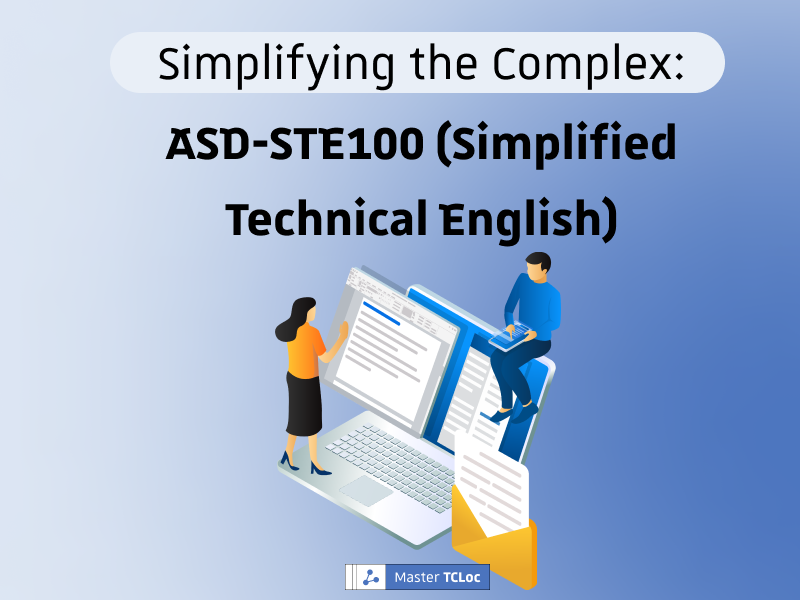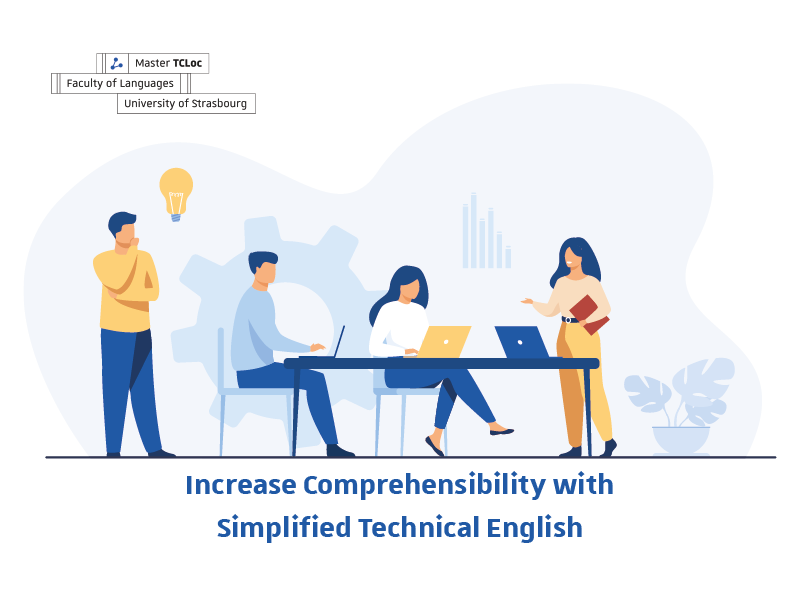For companies, Simplified Technical English (STE) offers many advantages. In her blog “Credible and Concise – Simplified Technical English” Shumin Chen mentions the key words “safety, efficiency, and readability”. She argues that by applying the STE, standard stylistic consistency and comprehensibility of technical texts are increasing. What’s more, translation may benefit from standardisation, because its application ensures an immense reduction in translation costs and better translation quality.
Based on Shumin Chen’s contribution, this article discusses the automatic checking of Simplified Technical English.
Possibilities and limitations
Essentially, nearly all STE rules which refer to text generation can be checked automatically. However, there are some restrictions to automatic checking due to the inherent challenges within the natural language processing system.
Approved meanings
By means of part-of-speech and semantic restrictions, STE determines the meaning of an approved word. This means that it defines which reading of an ambiguous word is considered the approved reading. A language checking tool may reliably identify approved words in a text, however, it may not decide which is the intended meaning of a word and resolve existing ambiguities.
Approved word forms
A linguistically based text checking tool analyzes words by identifying the smallest grammatically relevant units of a language, called morphemes. By means of a morphological analysis, the part-of-speech of a given wordform can be identified. If only one grammatical category is approved for a given word, the software can prompt this to the author in case of error.
Structural dependencies
Some of the STE rules refer to specific types of information like procedures or warnings. These types of information are most often characterized by typed element information, e.g. by means of XML tagging. The checking tool then takes into account the mark-up information during the proofing process and is thus able to check these structure-related rules. Therefore structuring the input text is a prerequisite, according to XML or style sheets like in Microsoft Word for example.
Rules above sentence level
Automatic rule checking has its limitations when above sentence level phenomena are checked.
An STE rule, for instance, allows only six sentences per paragraph. Currently, this rule cannot be checked by the sentence-based checking tool, since no information is available about the number of sentences at paragraph level.
Another example of a sentence-external rule is the one which recommends connecting sentences that contain related topics by using connecting words, or conjunctive words. The difficulty here is not simply creating adequate sentence structure, but also the fact that the checking tool cannot establish the logical relationships between the topics and propositions mentioned in the text.
This phenomenon leads us to the next challenge we are confronted with: world knowledge.
World knowledge as a prerequisite
It is commonly acknowledged that automated language checking allows for objective and consistent content checking. However, it can not totally replace human proofreading, as some aspects have to be checked by humans by applying world knowledge. For example, one STE rule could be mentioned where text should be organized logically by using key words and phrases. In order to Identify key words and ensure their correct usage, world knowledge as well as the author’s expertise are both necessary.
Prerequisites for efficient automatic language checking
In order to get the best results when using a checking tool, the following aspects should be taken into account.
Structured texts
As already mentioned above, some STE rules refer to specific types of information. In order to adequately check them, the software must be able to recognize the various structures and interpret them in connection with the linguistic rules. This is possible when texts are generated under structured text formats.
Terminology
Apart from following the STE rules and using the STE dictionary – which defines approved words, don’t forget about your own company’s terminology. It is also recommended to benefit from a sophisticated authoring software, such as an integrated, linguistically based terminology extraction and research program.
Correction proposals and hints for reformulating the text
If a standard like STE is implemented within an automated checking tool, it is very important that the correction proposals and hints for reformulating texts are of high quality and are easy to apply. Even the most straight-forward rules are useless when an author doesn’t understand or correctly and can’t apply them.
If the software allows for choosing correction proposals according to your own requirements, use this option.
Summary
It is possible to check most STE standard rules automatically. Sophisticated, linguistically based software covers nearly all relevant rules for content creation and recognises all approved and non-approved words of the STE dictionary.
The use of checking software creates a lot of added value. The software supports authors by retaining all the information to hand, so they don’t need to remember all the rules and words set by the standard. By continuously prompting the rules, authors can get quicker acquainted with the – kind of “ on the job training”. What’s more, relying on software offers the author the opportunity to focus on content and concentrate on the creative mission in hand.
About the author:
Ursula Reuther holds a degree in applied linguistics and translation studies and has been active in the development and project supervision in connection with automated language processing and language technology since 1986. Her work and interests mainly focus on language standardization, controlled language, and terminology. Since September 2011, she has been active for Congree Language Technologies GmbH in the fields of sales and consulting, in addition to her work at IAILC AG in Saarbrücken, Germany.
Thank you for reading, we hope you found this article insightful.
Want to learn more or apply to the TCloc Master’s Programme? Click HERE to visit the homepage.



